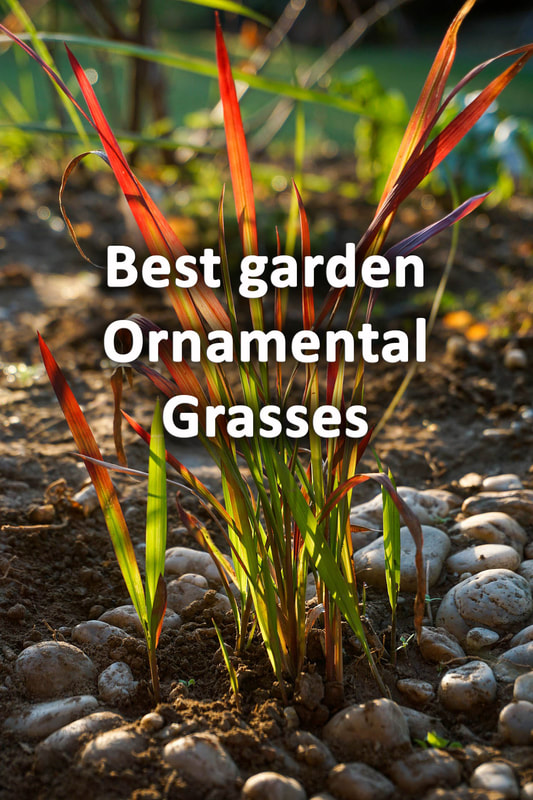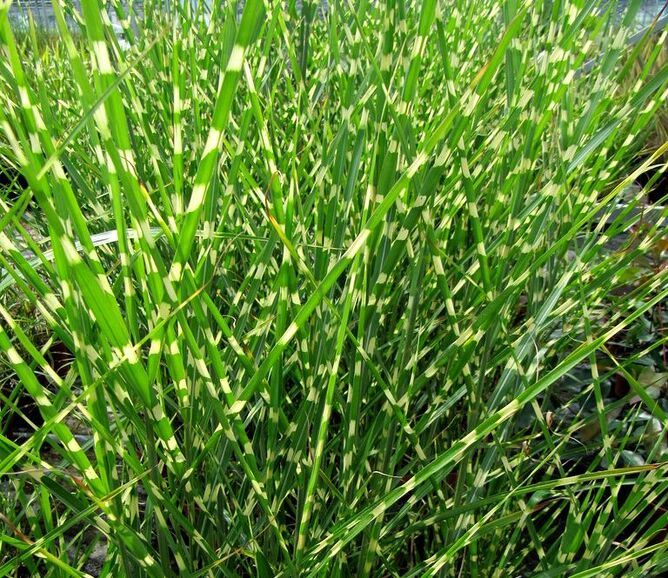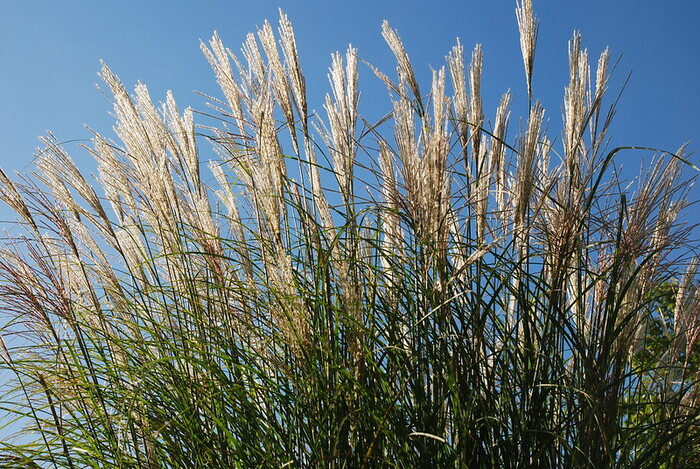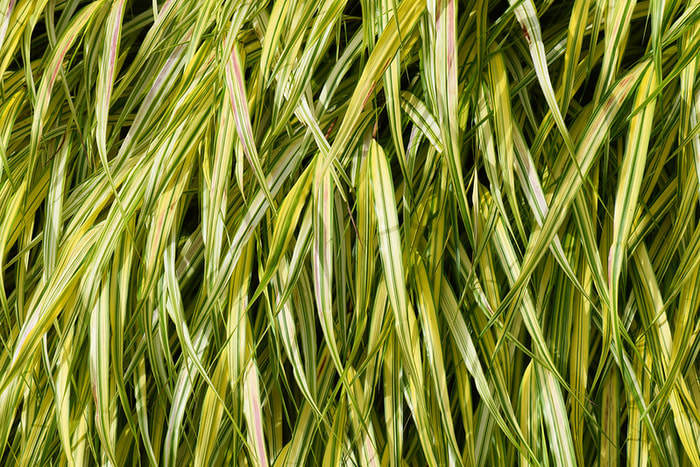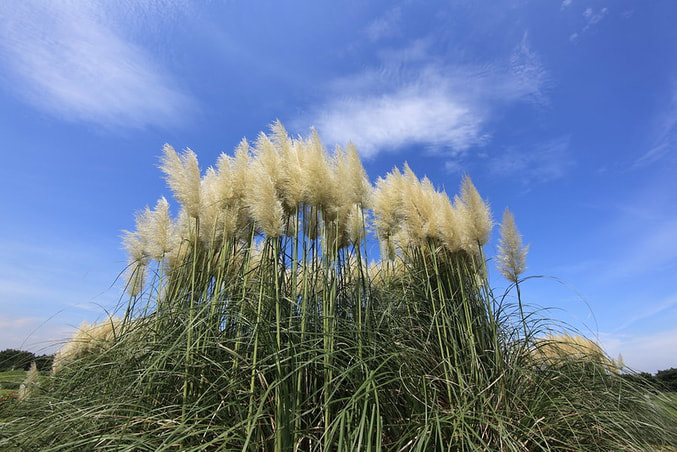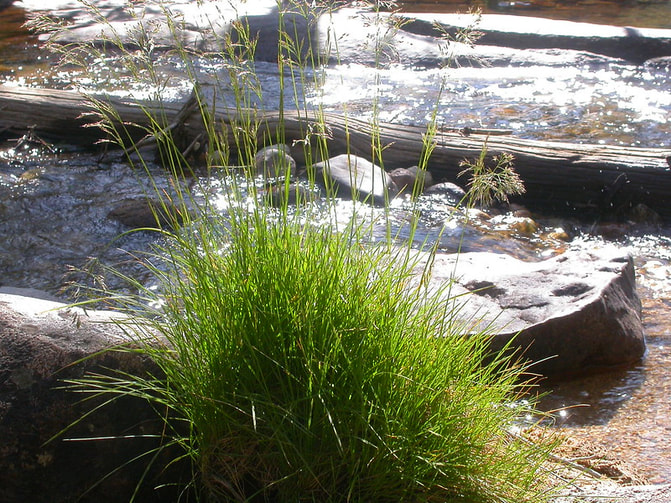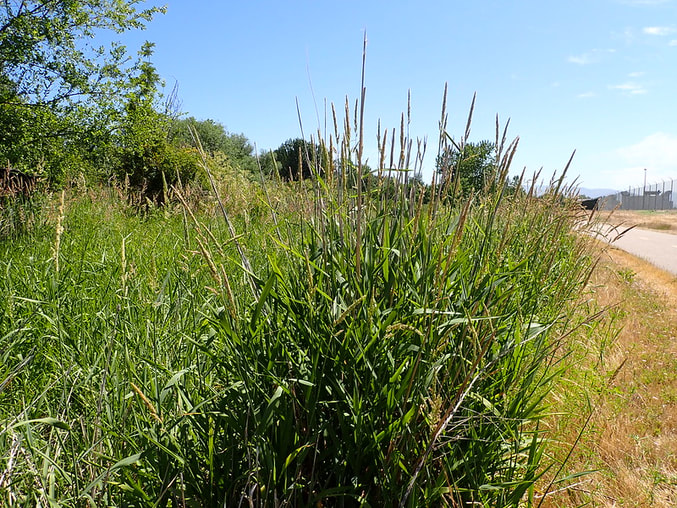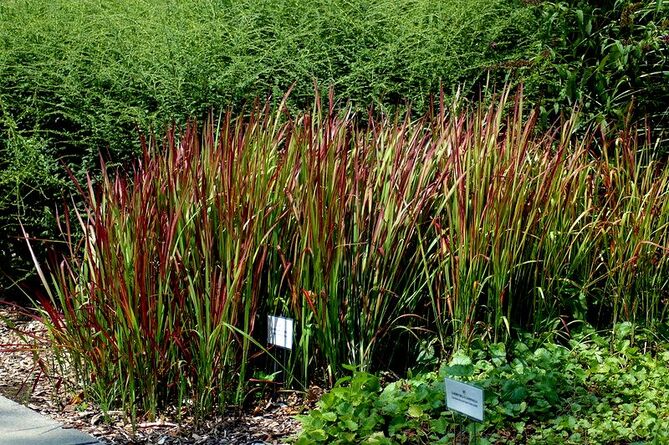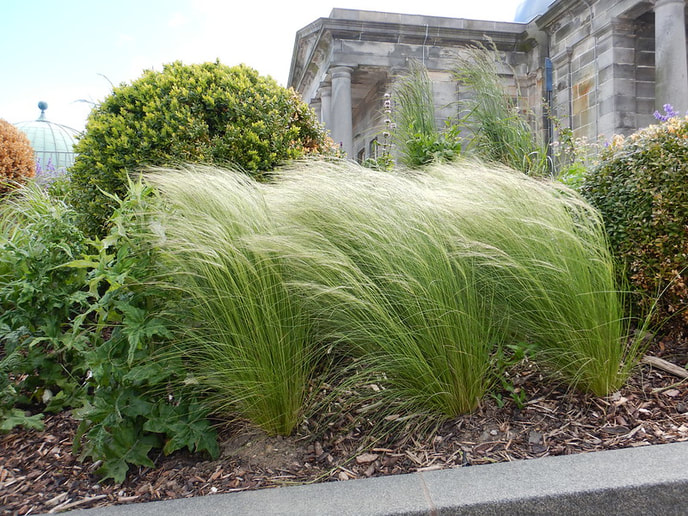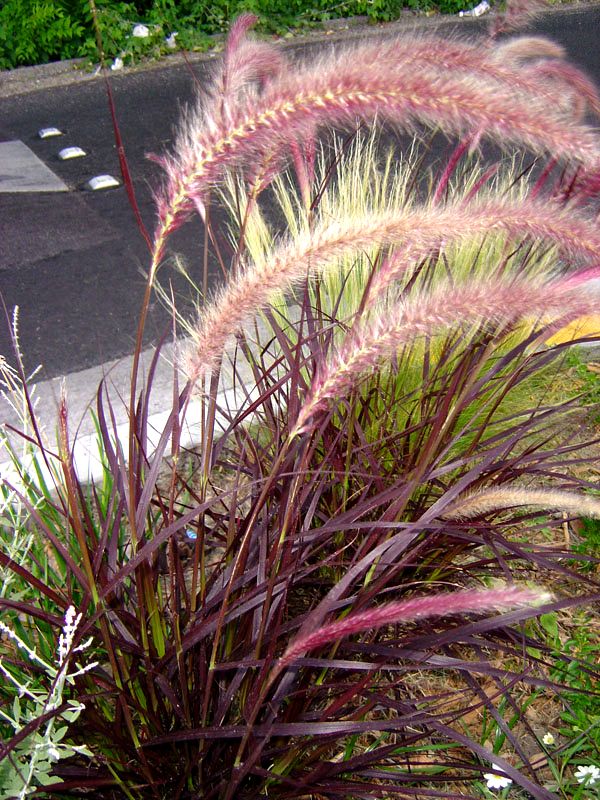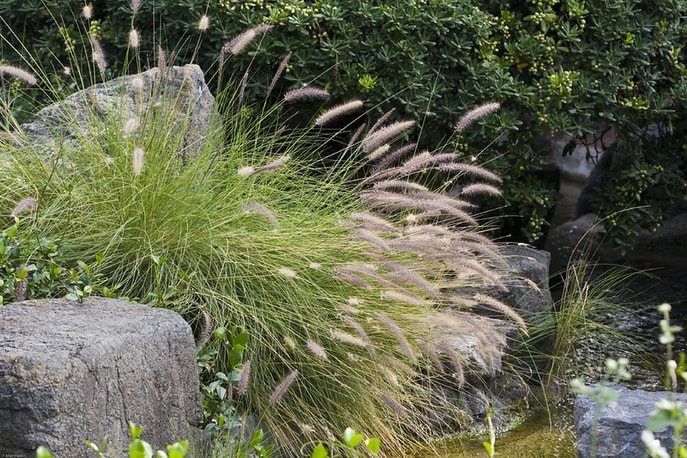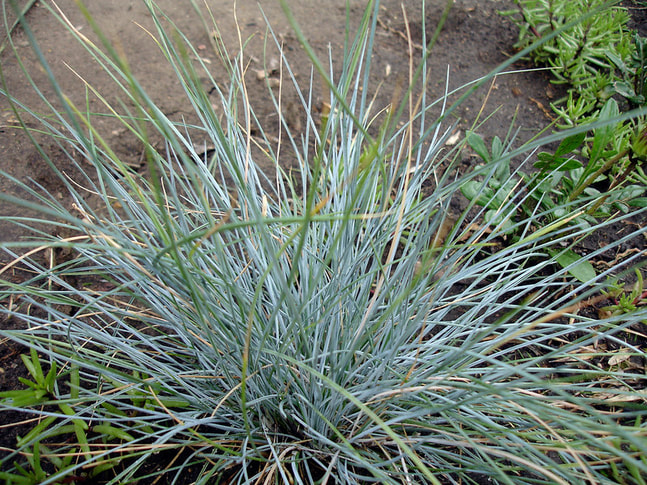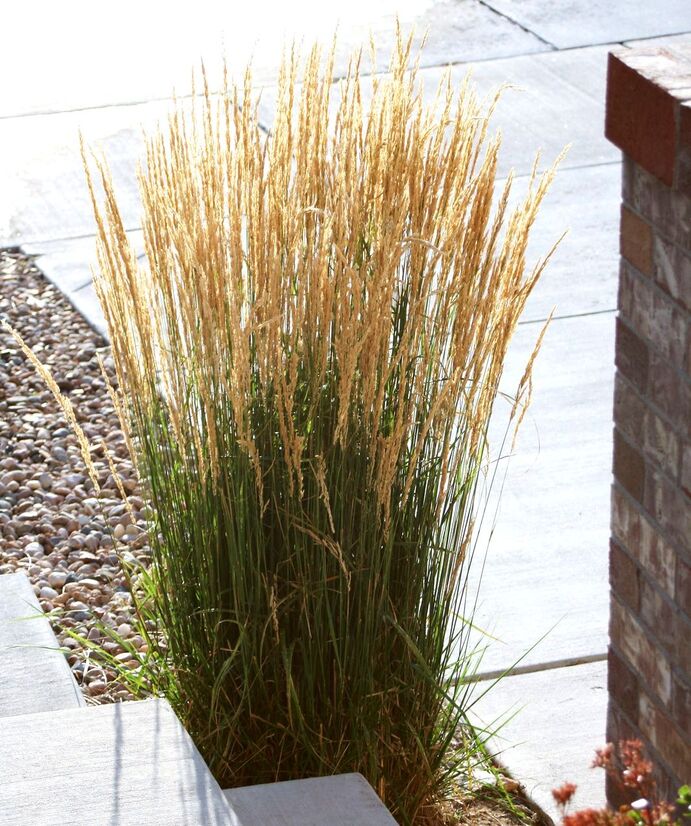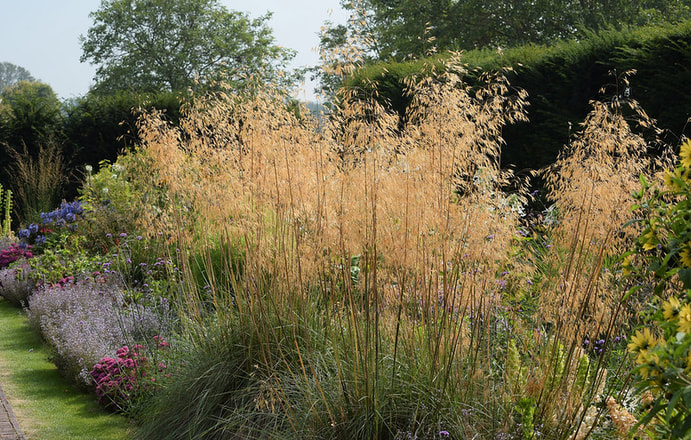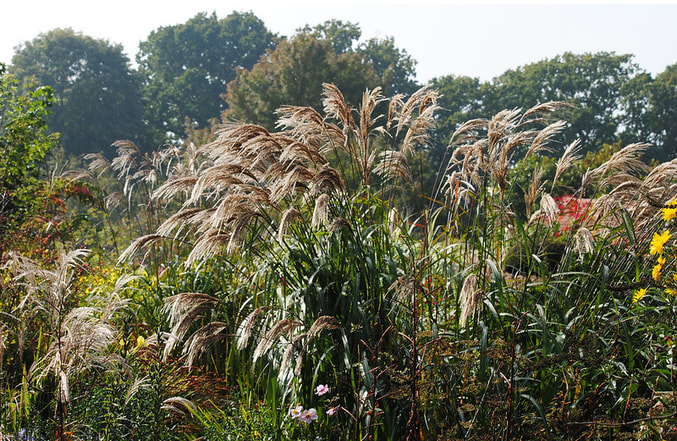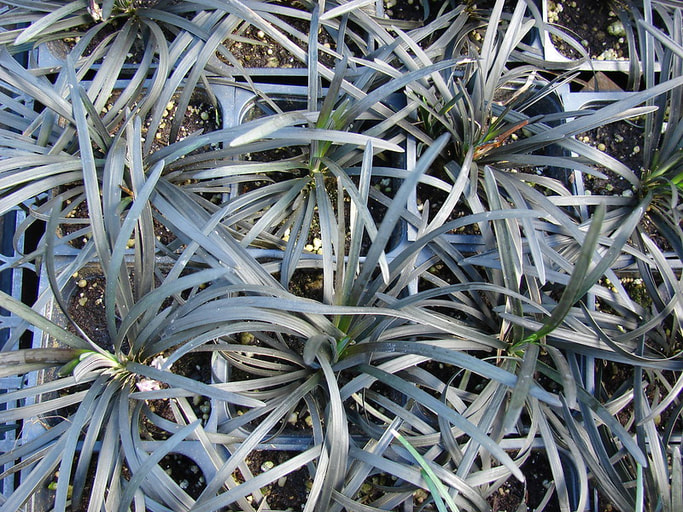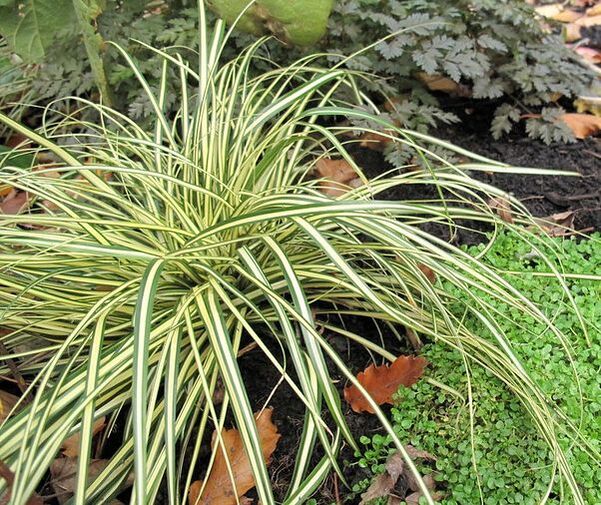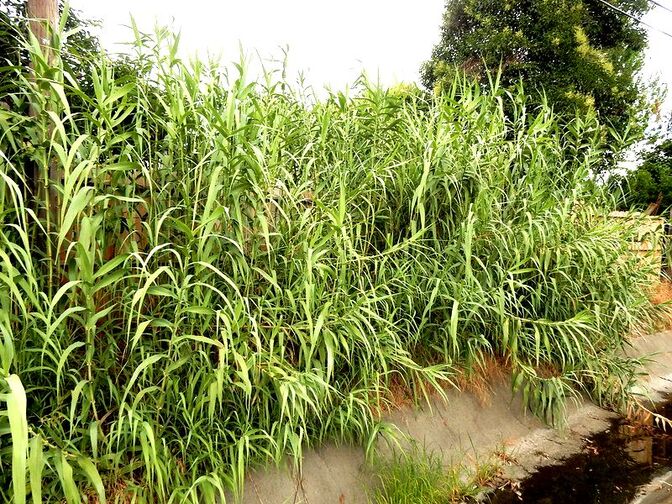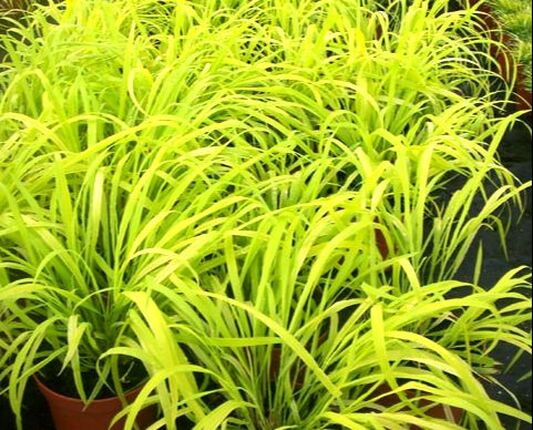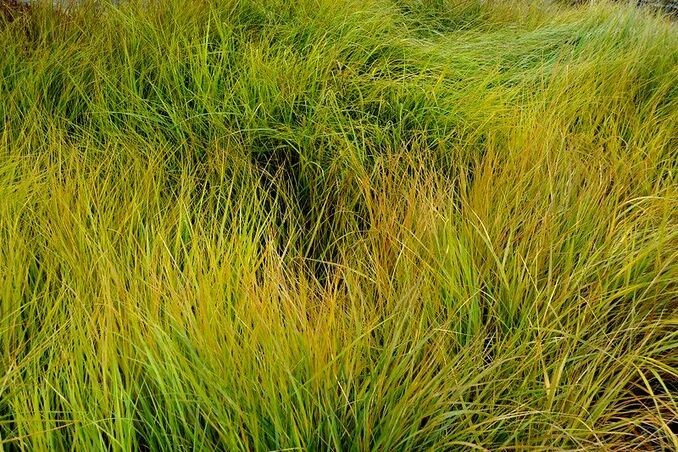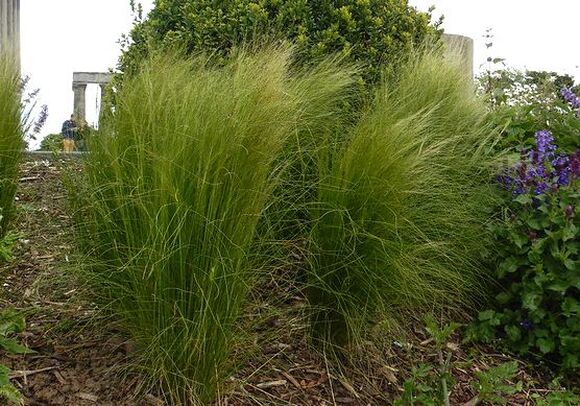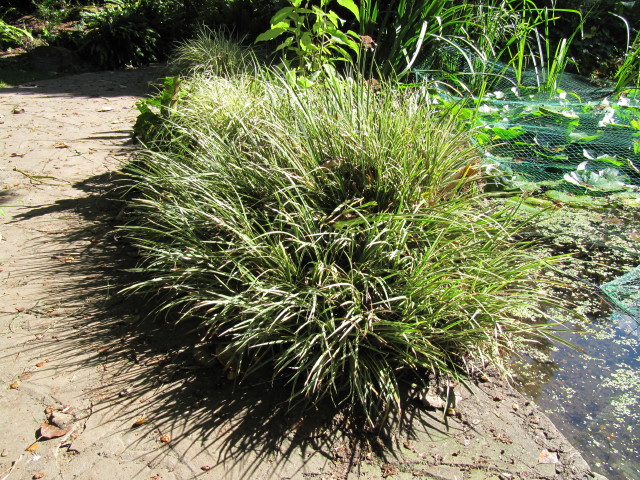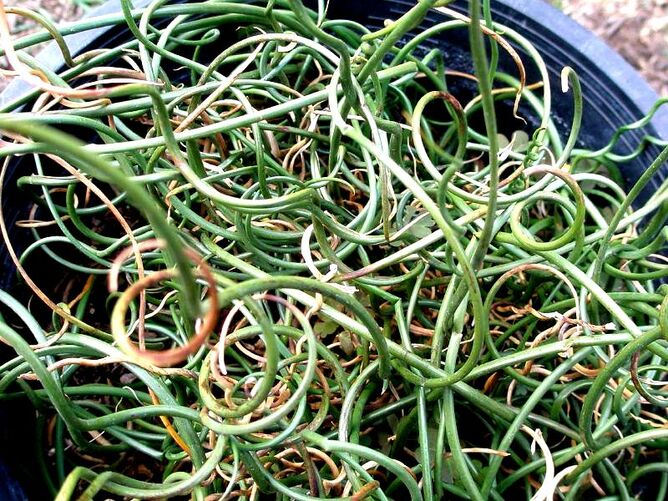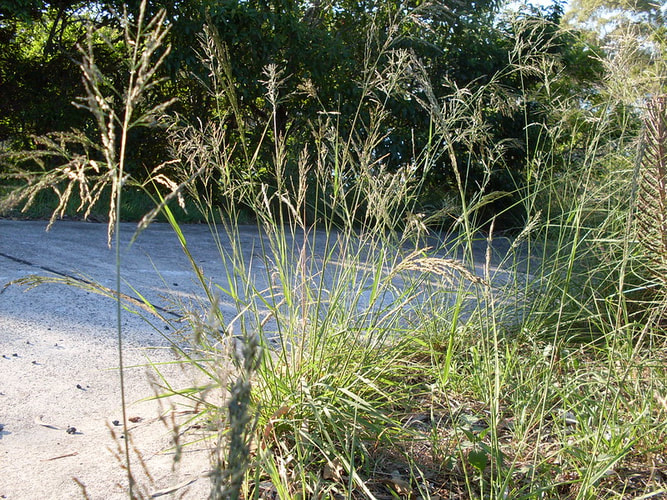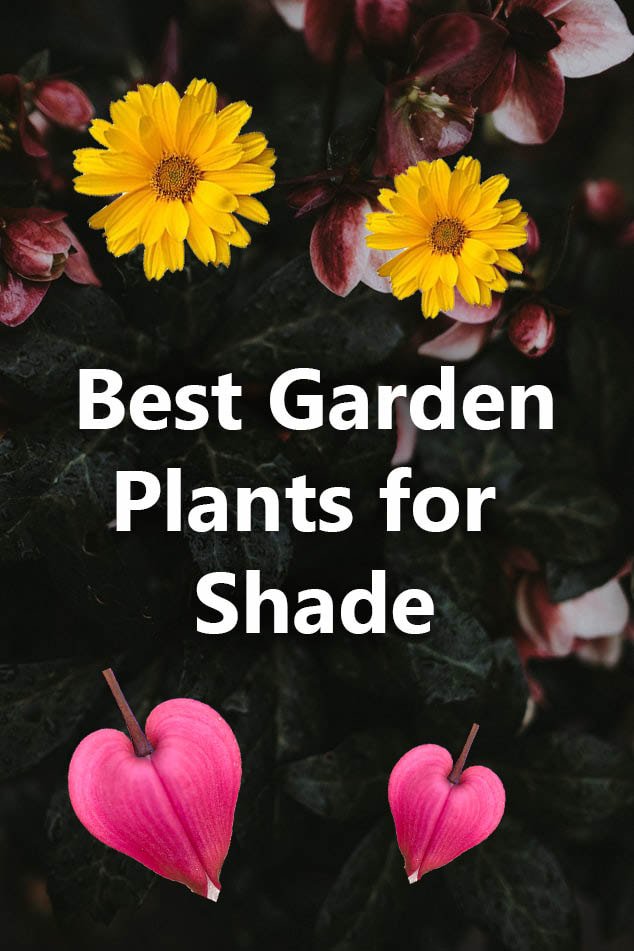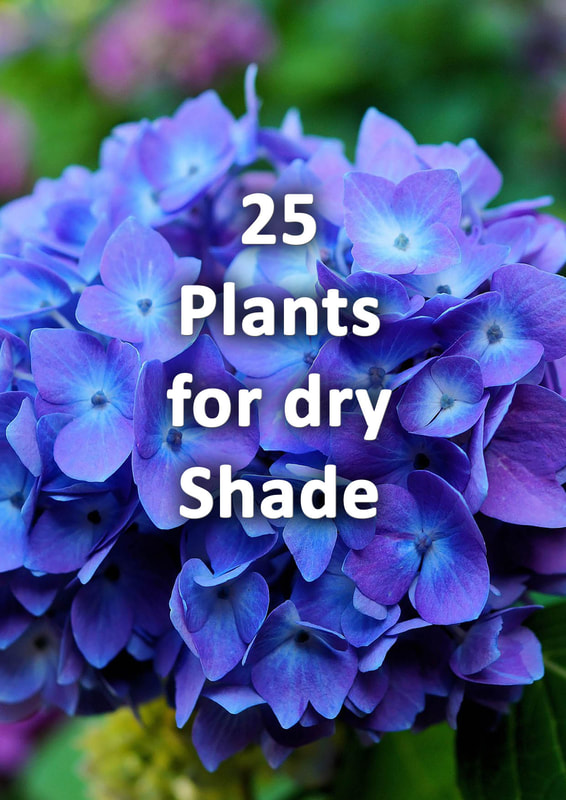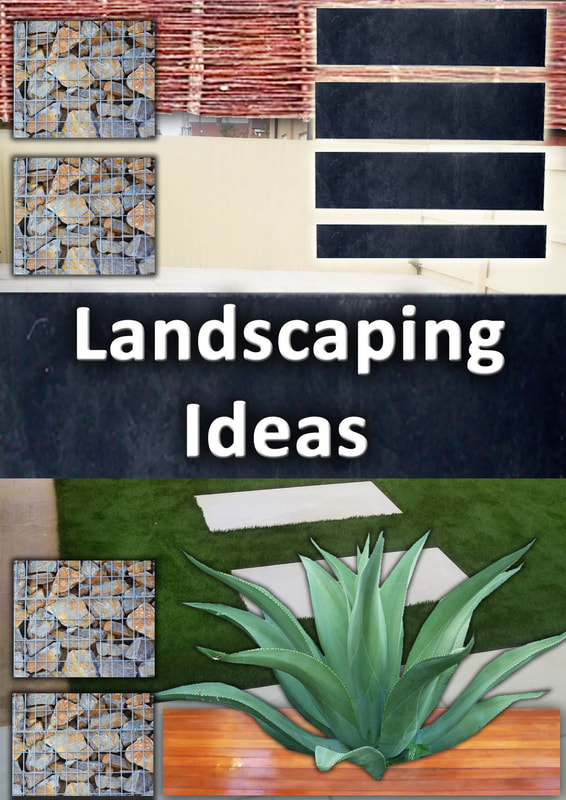|
This article contains affiliate links
Grasses are one of the most successful and widespread species of plants on the planet today.
They exist in every continent and are adapted to a wide range of temperatures and conditions. Known as a 'pioneering species' grasses are quick to spread and dominate large natural habitats. Even though grasses are very diverse in form and distribution they all have a similar growing habits. Their long, thin, leaves sprout from a central clump giving them a very centralised form. This allows many grasses the potential to be celebrated for their simplistic and architectural form.
Large grass species such as Stipa are perfect for creating a statement and movement, whereas other smaller grasses with coloured foliage are fantastic for groundcover.
Typically there is also a grass for every garden style, for example Miscanthus is great for tropical gardens. If you are creating a Japanese garden the Japanese forest grass is perhaps a better choice. With there being so many different cultivars of ornamental grasses there are so many to choose from! In this article we have listed and described the top 25 garden ornamental grasses to make your UK garden look amazing this season! 1. Giant Miscanthus (Miscanthus x giganteus)This deep green grass can grow up to 10-feet and has very wide leaves. Its size makes it suitable for use as a screen or physical barrier. When mature, it holds onto the ground quite well so, to save yourself the hustle of digging it up you are advised to allocate enough space from the onset. The grass is drought resistant so you don’t have to worry about irrigation. If you want an effective pot plant, the Giant Miscanthus would be a wonderful choice. 2. Japanese forest grass (Hakonechloa macra)
The Hakonechloa is native to south Honshu in Japan. It is grouped in the genus family Poaceae and is considered one of the best forest grasses from Japan. It bears distinctive brightly coloured leaves and some plant enthusiasts consider it an ornamental grass species. Many like it because of its non-invasive nature and rather peculiar spreading behaviour. One aspect about it worth mentioning is that it is a pretty slow-growing plant. It thrives best in rich and soggy areas but upon maturity, a more drought tolerant nature prevails. 3. Pampas grass (Cortaderia selloana)
This is a perfect grass to add texture and colour to any garden. When well-natured it grows dense and with tall thin blades that can grow up to 2 metres. This is no ordinary grass; its tolerance for harsh environments is astonishing. It can grow in salty areas, drought-stricken fields and is tolerant of deer grazing. The grass needs around 10 feet of spacing to grow. Once mature the blades grow sharp and strong and can be invasive if not managed. 4. Tufted Hair Grass (Deschampsia Cespitosa)This gold coloured grass is very useful when you need to stabilize a disturbed site or shoreline. It starts off as green before maturing into a dense gold-coloured plant with hair like flowers that can rise up to 3 feet tall. This winter grass can be inter-grown with ferns to add to its colourful appearance. If you love gardening, this is an ornamental grass with a delicate form which looks great. 5. Reed canary grass (Phalaris arundinacea)
This fast-growing and very aggressive grass originated from North America and some parts of Asia and Europe. There are reports that it is a crossbreed due to its abnormally fast growth.
It is common in wetlands and other dry but highly shaded areas. It spreads through rhizomes and runners. Upon establishment the Reed Canary grass can literally eliminate all other vegetation making it an effective ground cover. 6. Blood grass (Imperata cylindrica)This clumping grass can grow up to 60 cm when mature. It is a perennial plant that bears green and slightly tinged red tips when young before maturing into a blood-red colour. This grass can look very effective in a border or contrasted next to light coloured gravel. It is quite a novelty in the garden and especially effective for Japanese gardens. However be war, it can spread if unchecked. 7. Mexican Feather Grass (Nassella Tenuissima)This rather fine-textured grass is known to retain its original colour all year round although the heat sometimes burns its leaves. It thrives during cooler seasons, its leaves are not very rigid and sway in the slightest breeze. Its seeds appear around May and might self sow if not managed. You are advised to grow it in controlled areas with dry soil and unlimited access to sunlight. 8. Purple Fountain Grass (Pennisetum Setaceum Rubrum)
This must be the most popular ornamental grass ever documented. Whether grown on its own or grouped, the Purple Fountain grass always stands out. Maintaining this grass is easy once it matures. This grass cannot withstand winter and is considered a tender perennial grass. It only thrives in USDA Plant Hardiness zones 9 and warmer. It might survive zones 7 and 8 but winter protection is necessary. This is a factor worth considering before planting. 9. Chinese Fountain Grass (Pennisetum Alopecuroides)The Chinese Fountain Grass needs unlimited sunlight to flourish. When spacing, allow around 3-4 inches distance. The fountain grass works well as specimen grass and in flower borders. It looks more refined and delicate when compared to other grasses in its class. This grass thrives in wet but well-drained soil and is relatively resistant to pests. Despite needing adequate sunlight, you might sometimes come across fountain grass in light, deprived areas but this occurrence is rare. 10. Blue Fescue (Festuca Glauca ‘Elijah Blue’)As the name suggests this grass bears blue and wiry blades. Aside from its ability to retain colour all year round, its tolerance for multiple conditions is remarkable. If you rarely visit your garden in boots and a coat, this is the grass for you. Once established it requires hardly any maintenance and is an effective ground colour. To maintain the evergreen look, they tend to lose the old and brown leaves for new ones in spring. If the shedding delays, you can always pluck them off with your fingers. 11. Reed grass (Calamagrostis)The Reed grass is an easy to maintain grass that adds more than texture but life to your garden. Its application in architectural works has created marvellous results. This ornamental grass can easily thrive with minimal maintenance. This ornamental grass has numerous cultivars and is a deciduous plant. It grows up to 1.5 m with its fresh foliage emerging in early spring. Reed grass will spread regardless of damp or dry ground conditions or the availability of excess sunshine. 12. Giant Feather Grass (Stipa Gigantea)If you noticed the giant feather grass to have wheat like flowers you are not wrong. In fact this grass is closely related to the wheat family with the flowers appearing around June. This grass is suitable for use as a specimen, ornamental grass. They originally thrived in temperate regions before spreading across the rest of the world. You can use this grass to fill your wild garden or control erosion. Some of the problems to watch out for include eye spots and brown patches. 13. Chinese Silver Grass (Miscanthus Sinensis)As the name suggests, this grass originated from Asia. It is a common ornamental grass and is categorized in the Poaceae family. Some states find its multiple cultivars invasive. You are most likely to come across it along deserted roads and relatively disturbed areas. It will thrive in any type of soil and most environments with adequate sunlight. You can expect this grass to grow up to 12 feet. With its dissemination of seeds, it can self sow prolifically it not controlled. 14. Black Mondo Grass (Ophiopogon Planiscapus)This is an ornamental grass classified as a part of the asparagus family. It grows up to 12 inches tall and is a slow spreader that offers a pretty dense ground cover. It grows well in well-drained and slightly acidic soils with partial access to sunlight. This grass prefers to be planted in a relatively moist soil and is not drought tolerant. You can plant it as a semi marginal or capitalise on its ability to form a dense ground cover. 15. Sedge Grass (Carex)Sedge grass is in the genus carex. It blends quite well with the environment probably due to its evergreen leaves. Most carex members serve well as linings for pathways. They thrive well when grown in moist grounds and can be a suitable companion plant for hostas. All carex plants are tolerant of neglect but with regular care and watering in dry summers will thrive! This plants striking variegated leaves make it a real statement in the front of garden borders. 16. Giant Reed (Arundo Donax)Others call it arundo and others giant cane but all in all this Asian grass is among the most sought-after erosion control grasses there are. Among the most common areas to spot a giant reed are wetlands and riparian grounds. The grass is highly visible in areas of North America and The Mediterranean. This tall grass has very strong tubers that are used in the manufacture of flutes and organ pipes. Its leaves are also quite useful in the mat weaving industry. The variegated varieties look really effective in Mediterranean and tropical gardens. 17. Bowles golden grass ('Milium effusum')You might not love the color Bowles adds to your garden but the energy this grass brings will surely impress! It bears a chartreuse shade that brightens every garden that hosts it. If you don’t want them scattered around the garden you can concentrate them in the shady, dull areas. Don’t allow for your dislike of the chartreuse colour deny your garden the brightness that comes with the bowel’s golden grass. Its discovery and documentation are credited to Edward Augustus Bowles. 18. Pheasants Tail Grass (Stipa Arundinacea)The pheasant’s tail grass needs access to adequate sunlight to thrive. It grows well in relatively fertile and well-drained soil. It is the fastest growing grass of its type with the flowers blooming around September time. If you want to plant the Pheasants grass, be ready to offer winter protection because it can be tender during harsh winters. In spring you can once in a while run your fingers through the grass to remove the dead foliage. 19. Purple Moor Grass (Molinia Caerulea)The purple moor grass is native to Eurasia and thrives best in moist and fertile soils. Its ornamental characteristics are very aesthetic and can provide a gentle movement to borders. This grass variety needs a mild level of acidity in the soil to grow well. The flowers grow tall and distinctively, you are advised to grow them in large numbers for optimum effect. As a control measure, you can remove the seed heads during autumn as they can self seed. 20. Switchgrass (Panicum virgatum)This warm-season grass has its roots in North Carolina. It is among the most dominant species of the tall grass prairie ranges. This tubular and erect grass is extremely effective bordering pathways and patios. In nature you are likely to come across this grass growing along wet paths and woodlands. This means it can take some shade and damper soil conditions. Its height ranges between 3-4 feet with the flower plumes going up to 7 feet. It spreads by rhizomes to form a dense ground cover that is green all year round. 21. Pony Tail Grass (Stipa Tenuissima)Many people know this grass because of its golden pinnacles. Some books might call it ponytails but stipa tenuissima is its botanical name. It is easy to maintain and its ornamental features make it easy to plant in pots. You are best advised to plant it in well-drained soils. It can withstand temperatures as low as -10 degrees, so you don’t have to worry about winter protection. 22. Red hook sedge (Ucinia rubra)This rather unique breed of grass comes with shiny red-bronze foliage. The grass bears ornamental characteristics and grows best in damp areas with partial or full sunlight. It is a heavy consumer of minerals so the soil must be rich. In the wild you are most likely to find it in areas around water bodies. It also does well in containers and will brighten any dull looking corner or flower bed. However if it is to be grown in containers it will perish if not watered regularly. 23. Japanese sweet flag (Acorus gramineus)This little Japanese aquatic grass can reach almost 30 cm in height. It might not be the brightest grass in your garden but it sure adds some life to dull swampy areas. It grows naturally around pond edges and wetland habitats so perfect for a boggy garden. It is slow-growing but can achieve a width of up to 0.5m. Experts use it for soil stabilization in damp areas where erosion can be an issue. 24. Corkscrew rush (Juncus Effusus spiralis)This grass is a clear embodiment of versatility. It thrives in soggy grounds and drained soils too. It can serve well as a container plant or a novelty specimen. This plant adds a smile to the face of everyone who sees it, the unruly springing of foliage is quite a sight. When grown in block plantings the texture of its foliage can look almost spring like! This peculiar grass will always attract some attention from guests who have never seen one before! 25. African love grass (Eragrostis curvula)This densely green grass of African descent is very useful in soil erosion control. It is now also very common in Australia which gives homage to its adaptability to different climates. This drought tolerant grass does not tend to spread too much and has an attractive, delecate foliage. At the initial stages of flowering, the seed head is usually compact before blooming outwards. These seed heads are quite attractive and can grow up to 30 cm long. The leaves are narrow but long reaching and can grow to a length of 35cm.
Thank you for reading our article on 25 of the best garden grasses! If you found it useful why not share it via the social tabs at the bottom?
We have included some other articles below which may interest you. Thank you!
20 Best Ornamental Grasses | BBC Gardeners World Magazine
21 Ornamental Grasses to Add Unbeatable Texture to Your Garden (bhg.com) 10 award-winning grasses for your autumn garden / RHS Gardening
'As an Amazon Associate I earn from qualifying purchases'
0 Comments
Leave a Reply. |
The Author
|
Landscaping services across Buckinghamshire, Amersham, Aylesbury & High Wycombe
Hyde Heath, Amersham, Buckinghamshire |
|
